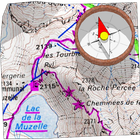
Leaflet
Leaflet is a leading open-source JavaScript library for creating mobile-friendly interactive maps. It's designed to be lightweight, simple, and highly performant.
License
Open SourcePlatforms
About Leaflet
- Layer Management: Easily add and manage different map layers, including tile layers (like OpenStreetMap or Google Maps), WMS, GeoJSON, and more.
- Markers and Popups: Place interactive markers on the map and attach informative popups to them.
- Vector Layers: Draw and interact with vector shapes such as polygons, polylines, and circles.
- Event Handling: Respond to user interactions like clicks, drags, and zooms.
- Mobile Optimization: Built from the ground up to provide a smooth and responsive experience on touch devices.
Pros & Cons
Pros
- Extremely lightweight, leading to fast loading times.
- Simple and intuitive API makes it easy to learn and use.
- Excellent performance and smooth rendering, even with complex maps.
- Strong focus on mobile compatibility and touch responsiveness.
- Extensive plugin ecosystem for extending functionality.
- Open-source and free to use.
Cons
- Core library has limited built-in advanced spatial analysis features.
- Reliance on plugins for many specialized functionalities.
- Documentation quality of individual plugins can vary.
- Less built-in support for advanced 3D rendering compared to some alternatives.
What Makes Leaflet Stand Out
Lightweight and Performant
Extremely small file size and optimized rendering ensure fast loading and smooth interaction, especially on mobile devices.
Simple and Easy to Use
Offers a straightforward API and clear documentation, making it approachable for developers of all skill levels.
Highly Extensible
A rich ecosystem of plugins allows customization and expansion of functionality for diverse use cases.
Mobile-First Design
Built with mobile and touch devices as a primary consideration, ensuring an excellent user experience on smartphones and tablets.
Features & Capabilities
12 featuresExpert Review
Leaflet carves out a significant space in the landscape of web mapping libraries, particularly for developers prioritizing performance, simplicity, and mobile responsiveness. Its design philosophy is centered around providing core mapping capabilities efficiently without the bloat often found in more comprehensive libraries. This focus is evident in its remarkably small file size, which translates directly to faster loading times and a more agile user experience, especially crucial in mobile environments where bandwidth and processing power can be limited.
The library's API is a testament to its commitment to ease of use. Developers familiar with JavaScript can quickly grasp the core concepts of initializing a map, adding layers, markers, and handling basic interactions. The documentation is clear, concise, and provides numerous examples, which significantly lowers the barrier to entry. This accessibility makes Leaflet an appealing choice for projects where rapid development and deployment are necessary.
While Leaflet provides a solid foundation, its true power is unlocked through its extensive plugin ecosystem. The community has contributed a vast array of plugins that address various needs, from advanced drawing tools and geometric operations to support for different data formats and routing services. This extensibility ensures that Leaflet can be adapted to a wide range of applications, from simple data visualization on a map to more complex location-based services requiring specialized features.
Performance is a key differentiator for Leaflet. The rendering engine is optimized for speed, resulting in smooth panning and zooming, even with a significant number of features displayed on the map. This performance is crucial for delivering a positive user experience, preventing lag and frustration, particularly on less powerful devices.
The library's mobile-first approach is another significant advantage. Built with touch interaction in mind, Leaflet handles events like pinch-to-zoom and panning intuitively, providing a native-like feel on smartphones and tablets. This is not merely an afterthought but a core design principle, making Leaflet an excellent choice for web applications targeting mobile users.
However, it's important to note that Leaflet, in its core, is a client-side library primarily focused on map display and interaction. While it integrates well with various backend data sources and services, it doesn't inherently provide server-side functionalities like complex spatial analysis or geocoding. For such requirements, integration with external services or libraries is necessary. Additionally, while the plugin ecosystem is rich, the quality and maintenance level of individual plugins can vary, which is a common characteristic of open-source projects.
In comparison to some other mapping libraries, Leaflet might not offer the same level of built-in advanced features or complex visualization capabilities out of the box. Libraries like Google Maps API or Mapbox GL JS might provide more integrated services or advanced rendering techniques (like 3D). However, for many common web mapping use cases, Leaflet's core feature set is more than sufficient, and its extensibility bridges the gap for more specialized needs.
The open-source nature of Leaflet is a significant positive. It means the library is free to use, modify, and distribute, making it a cost-effective solution for projects of any scale. The active community also contributes to ongoing development, bug fixes, and support through forums and issue trackers.
In conclusion, Leaflet is a highly recommended JavaScript library for developers seeking a lightweight, performant, and user-friendly solution for creating interactive web maps, especially when targeting mobile audiences. Its simplicity, extensibility, and strong focus on performance make it a compelling choice for a wide array of mapping projects where speed and responsiveness are paramount.














